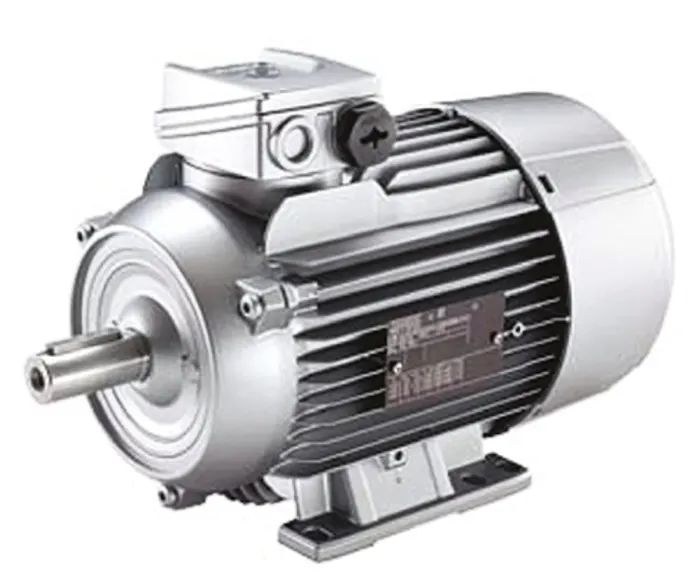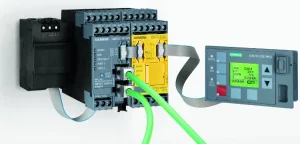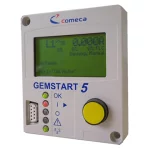This is Part 5 of the series of articles about three (3) phase Ac motor protection. Links to others parts could be found in below links:
Open Phase Condition and Phase Unbalance
Overload relays provide adequate protection against open phase (single phase) operation for motors in most instances, however, there are protection relays that are specifically designed to give protection against open phase and phase unbalance operation. These relays give protection under some conditions where overload relays would not operate. These relays operation may be time delay or instantaneous and will operate on 25% phase unbalance.
Overload relays have a time delay to activate and require several minutes to operate on an open phase condition. Single phase operation of three (3) phase motors not only causes a high current in the remaining winding but also results in severe vibrations that could damage the motor and the connected equipment. Under this condition, the relay operating time may be too long to prevent damage to the motor. The only way to be certain that the overload relays will adequately protect the motor under this condition is to check with the motor and controller manufacturers. If there is any doubt regarding the degree of protection, an open-phase or phase unbalance relay should be considered. These relays can be adapted for almost all types of motor controllers.
Phase Reversal Protection
Protection against the reversal of rotation of a three (3) phase motor is provided by a special type of relay that shuts down the motor on the reversal of the connection of any two of the phases but remains inoperative when the desired phase sequence is maintained. This relay type operates on phase current or phase potentials.
Incomplete Sequence Protection
The purpose of incomplete sequence protection is to protect against malfunctioning of the control circuit. This protection is normally employed to protect components of motor controllers. This protection is likewise used to insure the proper programming of circuitry required for process operation or control.
Incomplete sequence protection is normally provided through the use of a timing function which is initiated at the instant of motor starting and automatically rendered ineffective by the successful completion of the last step in the circuitry. Should the final step fail to operate within its desired limits, the protective element will operate, stopping the motor. When incomplete sequence protection is used, to protect components having intermittent thermal ratings, thermal type timing devices having wide range adjustment are normally employed in order to provide protection that follows the actual heating of the components being protected.
Starting Considerations
Three (3) phase AC motors should be started across the line on full voltage, provided the construction of the motors, the nature of driven equipment, and the stability of the power systems are satisfactory. In cases where the supply system does not have the capacity to meet the starting current requirements, line voltage disturbances can be rather severe. Variations in system voltage have impacts on sensitive electronic equipment within the power system.
The most important point of consideration in selecting the type of starting to be used is the power line stability. Low line voltage during starting of motors and during normal operation of motors is the most common and the most damaging hazard to distribution systems. Inadequate line stability is responsible for motor overheating and burnouts, damage to controllers, and unscheduled shutdowns.
To improve line voltage conditions during the starting of motors on a power system, the following may be implemented:
- Planned starting of motors
- Method of motor starting
- Types of motors used
Improved voltage stability may be possible through a planned starting of motors in the most advantageous. Large motors should be started first and the smaller ones started last. Several methods of starting are available to limit the starting current of AC motors. These are the reduced voltage controllers which reduce the motor starting KVA.
Conclusion
From this series of discussions, it is obvious that there are many problems in connection with motor control and protection. Controllers for AC motors cover a wide range of types and sizes to meet the different characteristics of various motor applications. A motor controller can be a simple or complex design depending on the size and the particular application of the motor. It is often difficult to obtain complete protection of all types at the same time to ensure the very best operation of the motor. Sometimes a compromise is necessary and some desirable function or functions must be eliminated to get the best motor overall performance.
With the advent of modern technology, the application of smart motor protection relays which integrates all the possibilities of motor protection required in a single module is now easily available in the market. Below are some of these protection relays from different manufacturers.
For reduced voltage starting, variable speed drives or soft starters could be employed.



